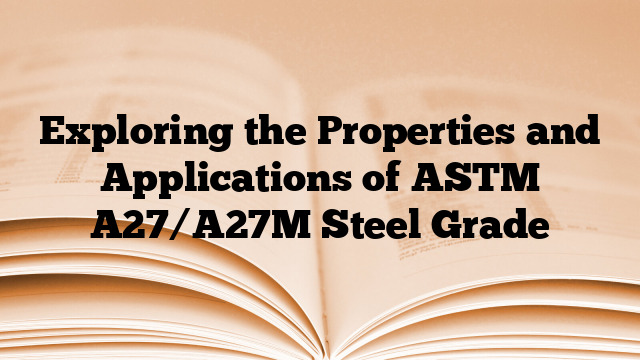ASTM A27/A27M is a standard specification for carbon steel castings for general applications. It covers grades such as Grade N-1, Grade N-2, Grade U-60-30, Grade 70-40, etc. Each grade has different chemical composition and mechanical properties.
Chemical Composition:
The chemical composition of ASTM A27/A27M steel grade castings varies depending on the grade. Generally, the castings are made from carbon steel with the following composition:
– Carbon (C): 0.20% maximum
– Manganese (Mn): 0.70% maximum
– Phosphorus (P): 0.05% maximum
– Sulfur (S): 0.05% maximum
– Silicon (Si): 0.60% maximum
Mechanical Properties:
The mechanical properties of ASTM A27/A27M steel grade castings also vary depending on the grade. However, some common mechanical properties include:
– Tensile strength: Ranging from 50,000 to 90,000 psi (345 to 620 MPa)
– Yield strength: Ranging from 30,000 to 60,000 psi (205 to 415 MPa)
– Elongation: Ranging from 20% to 30% depending on the grade
– Hardness: Varies depending on the grade
Applications:
ASTM A27/A27M steel grade castings are commonly used in various industries for general applications. Some common applications include:
– Structural components: These castings are often used in the construction of buildings, bridges, and other structural frameworks.
– Machinery parts: ASTM A27/A27M steel grade castings are used for manufacturing various machinery components such as gears, pulleys, and brackets.
– Valves and fittings: They are also used in the production of valves, fittings, and other flow control equipment.
– Automobile parts: Some grades of ASTM A27/A27M steel grade are suitable for making automobile components like engine blocks, cylinder heads, and transmission parts.
Overall, ASTM A27/A27M steel grade castings offer good strength and ductility, making them suitable for a wide range of applications in different industries. The specific properties and composition of the castings may need to be considered depending on the intended application and required performance.

